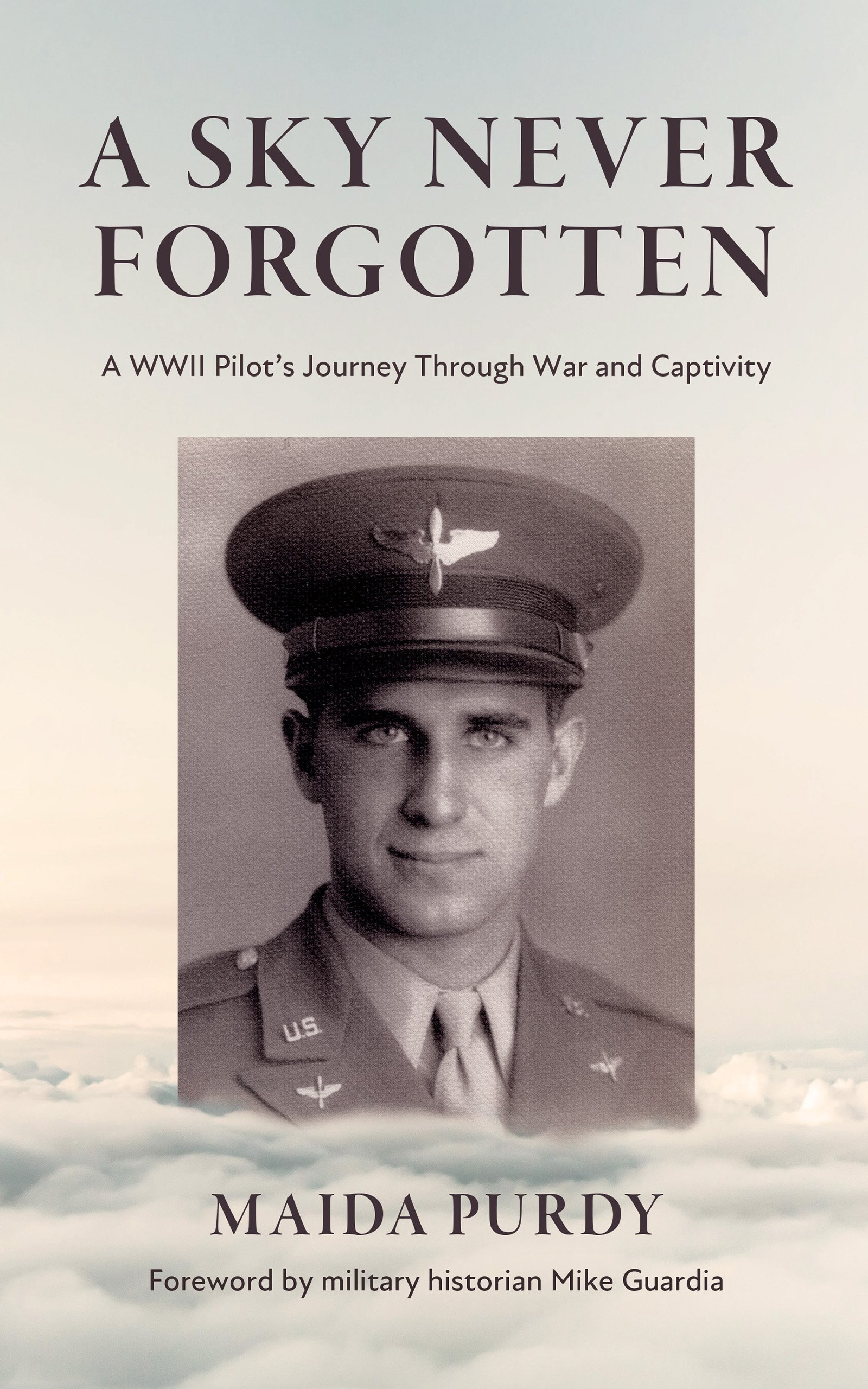John R. Woodruff, POW
When the chute finally came out, the snap pulled the risers loose from the harness and the pack went above my head. This flipped me up-side down and I landed on my back and shoulder, so I was unable to move from the waist down for three days. After the third day the feeling came back into my legs and I was able to move some. I was able to bury my chute and crawled to some near-by woods.
I had trouble finding water, so I sucked on a cob of corn. After two more days I stumbled to a farm house early in the morning and went to the well. After I finished drinking from an old wooden bucket, I looked up and found that I was surrounded by a family of peasants. The man was armed with a wicked looking pitchfork. They fed me, then the man took me down the road to a small village.
There I was turned over to an Army officer, at a small official looking building. No one there spoke English, so he sent a boy out to get someone. He came back with a priest or monk, I don't know what he was. He spoke no English either, so they sent the boy out again. This time he came back with a young woman who spoke very good English. She said her husband was a Capt. in the Romanian Air Force. She tried to question me, but all I would tell her was my name, rank, and serial no. She told me that the war was over for me and that I would be sent to a camp up in the mountains until the war was over. The camp I was sent to was right in the center of the city of Bucharest.
A little later the officer started walking me down the road. He got impatient with me because I couldn't keep up with the pace he set. After a while he flagged down an old truck. It looked like it belonged in a museum. It was an old American Fargo Truck. I had never heard of one. It had a chain drive from the engine to the back wheels. The wheels were real high, with wooden spokes. They had solid steel rims, with rubber on the steel. The cab was open on the sides. They helped me get in and we went on our way. The old man was very proud of his Americansky truck. He took us to the outskirts of Bucharest. There we got on a street car. This took us to the prison camp. On the way there a woman on the street car spit in my face.
Upon reaching the camp, I was interrogated by a young German officer. He spoke English better than I did. He seemed to know a lot about me already. He told me that he knew I was from one of two crews that were shot down on Aug. 10. After this I was re-united with the other enlisted men of my crew. The officers were in a different camp across town. They were surprised to see me. They thought I hadn't made it.
On Aug. 23, when the Russian troops started coming into Bucharest the Romanian Govt. capitulated, and they opened the gates of the camp. We were told to stay around as they might move us out of the city.
On Aug. 24 the Germans who still had control of some of the airfields started bombing the city, they bombed for 48 hrs. without letup. They hit the prison camp hospital and some of us helped get the wounded out.
They moved us to an airfield outside of the city. We had air raids for 2 more days, off and on. Russians entered the city Aug. 30. We got to walk around the neighborhood near the airfield. We met a couple of young Russian officers. They were about our age. We had a picture taken in a little photo gallery, of the 2 Russians and us. We wrote our names and addresses on the back of each others pictures. We also met a Romanian couple who owned a small cafe. They had lived in Detroit for 13 years and had worked for Ford Motor Co. They saved their money and went back to Romania and went into business for themselves.
Aug.31, B-17's came in from Italy and flew the first group of us back to Italy. They came back the next day, Sept. 1, and flew the rest of us out. We were taken to the 15th A.F. hospital in Barie. We were de-loused, given clean uniforms, physicals and interrogated.
We were returned to our bomb group and squadron Sept. On Sept.4 we had more physicals. Interrogated at S-2. Sept. 5. Received Air Medal and Purple Heart.


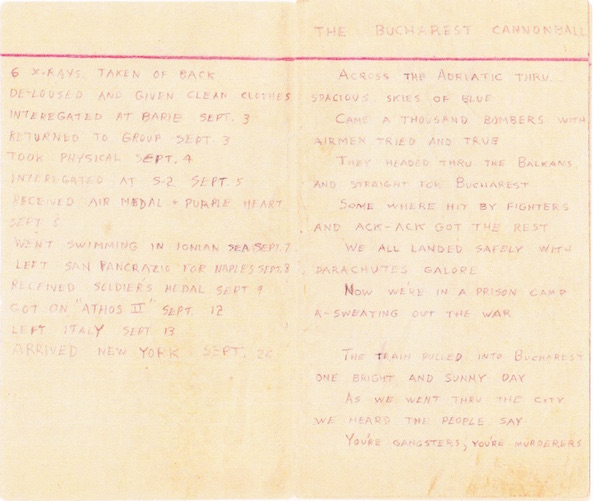
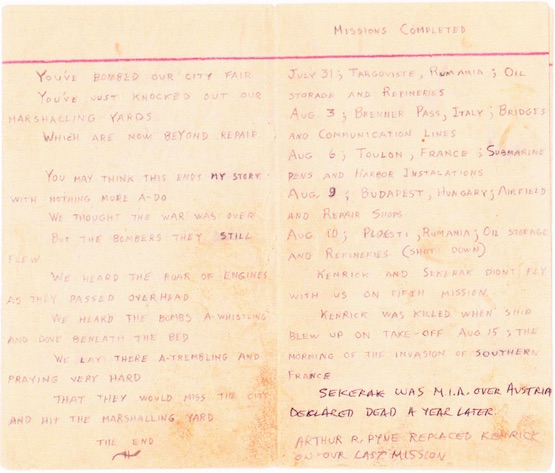
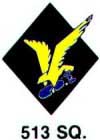
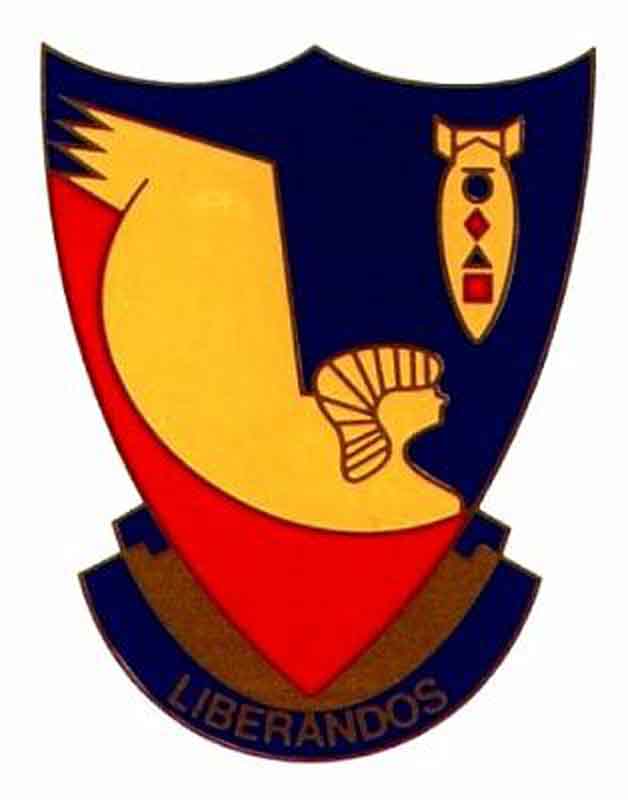
The website 376bg.org is NOT our site nor is it our endowment fund.
At the 2017 reunion, the board approved the donation of our archives to the Briscoe Center for American History, located on the University of Texas - Austin campus.
Also, the board approved a $5,000 donation to add to Ed Clendenin's $20,000 donation in the memory of his father. Together, these funds begin an endowment for the preservation of the 376 archives.
Donate directly to the 376 Endowment
To read about other endowment donation options, click here.
Reunion
NOTE change in the schedule !!
DATES: Sep 25-28, 2025
CITY:Rapid City, SD
HOTEL: Best Western Ramkota Conference Hotel; 2111 North LaCrosse St., Rapid City, SD 57702; 605-343-8500
Click here to read about the reunion details.




















